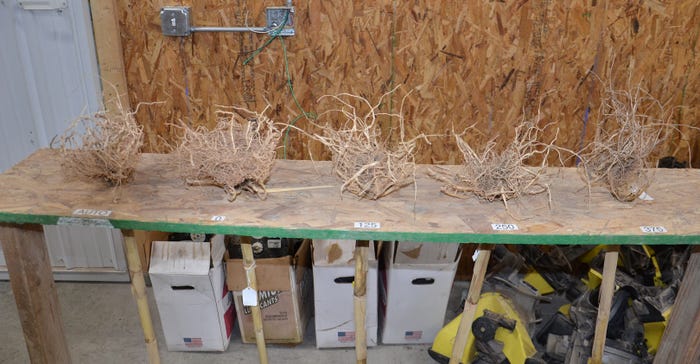
Soil compaction can be a yield killer. Sometimes it’s the cost of doing business. But there are ways to minimize how much soil compaction you create.
Neil Cline operates a Precision Planting dealership for Tom and Karen McKinney on their Tipton, Ind., farm. He has found that the wrong amount of downforce on planter row units, especially if there’s too much downforce, can add to soil compaction problems. If it turns dry later in the season, those problems are more likely to affect root growth and function, which can impact yield.
Cline has also found that rows located between tires on big planters can suffer from the “pinch-row effect.” It’s a form of soil compaction created by the force of tires running close to the row.
Here’s a closer look at each situation.
• Downforce on row units. You could only run with conventional springs used to apply downforce on many planters until a few years ago. Some allowed for different settings. However, there was no accurate way to gauge actual pressure applied on the units. Changing spring settings was done by hand.
Precision Planting introduced AirForce, which allows you to adjust downforce across the entire planter. Later, it introduced DeltaForce, which uses hydraulic pressure to adjust each row unit individually.
In 2017, Cline ran plots where he applied either no pressure, let the unit run on automatic settings or set pressures at different levels from 125 to more than 300 pounds per square inch. Later, he dug up plants, turned them upside down and placed roots in a wooden stand for field days.
One look across the roots in his display tells the story. The automatic setting and 125 psi setting produced uniform roots that penetrated downward. At zero pressure, the roots look reasonable. “The problem was that they were mostly near the surface,” Cline says. They didn’t penetrate very far.”
At the highest setting, he produced “hatchet roots.” “There was so much pressure on the units that it compacted the soil, and the roots had a harder time growing, especially near tire tracks,” Cline says. “You need downforce, but not too much downforce.”
• Pinch-row effect. McKinney runs a 24-row, central-fill planter, only he doesn’t use the tanks for seed. He places seed in boxes on row units instead. Nevertheless, the pinch-row effect was evident in some fields last summer.
“You could look out toward the field and pick out rows planted between planter tires,” Cline says. “We checked at harvest, and those rows definitely yielded less. There was too much soil compaction created by those tires.”
McKinney eventually plans to replace tires with tracks. He believes that’s one way he can limit the potential for creating soil compaction.
Check out the slideshow to see examples of how difference amounts of pressure affect roots.
About the Author(s)
You May Also Like




